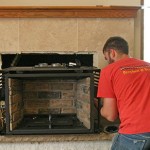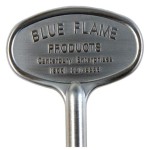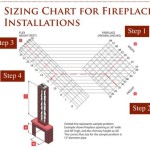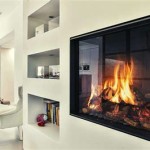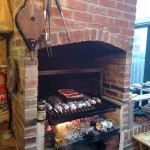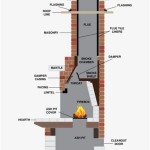Mounting a Flat Screen TV Above a Brick Fireplace: A Comprehensive Guide
Mounting a flat screen television above a brick fireplace presents a unique set of challenges compared to mounting on drywall or stud walls. Brick, being a solid and often uneven material, requires specialized tools, techniques, and considerations to ensure a secure and aesthetically pleasing installation. This article aims to provide a comprehensive guide to safely and effectively mounting your television above a brick fireplace, covering essential planning steps, necessary tools, installation procedures, and potential problems to avoid.
Before commencing with the installation, it is crucial to assess the suitability of the fireplace and surrounding area for television mounting. This preliminary assessment involves considering factors such as the fireplace's usage, the television's size and weight, viewing angle, and aesthetic preferences. Overlooking these initial considerations can lead to compromises in viewing experience or, more seriously, structural instability and potential damage.
Assessing Fireplace Suitability and Safety Considerations
The first and foremost consideration is the fireplace's functionality. If the fireplace is actively used for burning wood or gas, the heat generated can potentially damage the television's internal components. The heat rises directly above the fireplace, creating a concentrated zone of high temperature. According to electronics manufacturers, sustained exposure to temperatures exceeding 100°F (38°C) can significantly reduce the lifespan of electronic components. Actively using a fireplace underneath a mounted television is generally discouraged.
However, if the fireplace is primarily decorative or used infrequently, the risk is reduced. In these instances, it is crucial to measure the temperature above the mantle or proposed mounting location while the fireplace is in use. This can be achieved using a non-contact infrared thermometer. If the temperature consistently exceeds the manufacturer's recommended operating temperature for the television, alternative mounting options should be explored.
Moreover, consider the type of fireplace. Gas fireplaces usually generate less heat than wood-burning fireplaces, making them comparatively safer for mounting a television above. Electric fireplaces, which primarily simulate flames and provide supplemental heat, pose the least risk as the heat output is often adjustable and directed away from the television.
Another critical safety concern is the presence of gas lines or electrical wiring within the brick structure. Drilling into brick blindly can inadvertently damage these utilities, resulting in hazardous situations. Before drilling, it is advisable to consult with a qualified electrician or plumber to ascertain the location of any hidden utilities within the vicinity of the proposed mounting area. Furthermore, using a stud finder with AC wire detection capabilities can help locate electrical wiring, although its effectiveness on brick can be limited.
Selecting the Appropriate Mounting Hardware and Tools
The selection of appropriate mounting hardware and tools is paramount for a secure and successful installation. Using standard drywall anchors or screws is insufficient for brick, as they lack the necessary holding power to support the weight of the television. Specialized anchors designed for masonry are essential.
Several types of masonry anchors are available, each with varying load-bearing capacities and installation requirements. Wedge anchors, sleeve anchors, and tapcon screws are commonly used for mounting televisions on brick. Wedge anchors provide a strong and permanent hold, making them suitable for heavier televisions. Sleeve anchors offer a more versatile option, allowing for adjustments after installation. Tapcon screws are self-tapping screws specifically designed for concrete and brick, offering ease of installation and decent holding power for lighter televisions.
The choice of anchor depends on the weight of the television, the type of brick, and the desired level of adjustability. Always consult the manufacturer's specifications for the television mount and the masonry anchors to ensure that the chosen hardware can safely support the weight of the television. It's prudent to select anchors with a higher weight capacity than the television's weight to provide a safety margin.
Beyond the mounting hardware, a specific set of tools is required for drilling into brick and securing the television mount. A hammer drill is indispensable for drilling accurate and clean holes in brick. Standard drills lack the necessary impact force to efficiently penetrate the hard surface of brick. A masonry drill bit, specifically designed for drilling through brick and concrete, is essential. The size of the drill bit should match the recommended diameter for the chosen masonry anchors.
Additional tools include a level (preferably a digital level for increased accuracy), a stud finder (primarily for detecting electrical wiring), a measuring tape, a pencil or marker, a socket wrench or adjustable wrench (for tightening the anchors), a screwdriver (for securing the television to the mount), and safety glasses and ear protection.
Installation Procedure and Best Practices
Following a systematic installation procedure is crucial for achieving a secure and aesthetically pleasing result. Before commencing the installation, carefully read and understand the instructions provided with the television mount and the masonry anchors. These instructions typically provide specific details on drilling depths, anchor spacing, and torque specifications.
The first step involves determining the desired location for the television on the brick fireplace. Consider the viewing angle and distance from the seating area. Ideally, the center of the television screen should be at eye level when seated. Use a measuring tape and level to accurately mark the mounting points on the brick wall. Use a pencil or marker that is easily visible on the brick surface.
Next, use the hammer drill and masonry drill bit to drill pilot holes at the marked locations. Drill the holes to the depth specified in the masonry anchor instructions. Ensure that the drill bit is held perpendicular to the brick surface to create straight and accurate holes. Drilling at an angle can compromise the integrity of the hole and the holding power of the anchor.
After drilling the pilot holes, clean out any debris or dust from the holes using a vacuum cleaner or compressed air. This ensures that the anchors can properly grip the brick. Insert the masonry anchors into the pilot holes. For wedge anchors, typically require hammering them into the holes until they are flush with the brick surface. For sleeve anchors and tapcon screws, follow the manufacturer's instructions for tightening and securing them.
Attach the television mount to the secured anchors. Ensure that the mount is level and securely fastened to the brick wall. Use a socket wrench or adjustable wrench to tighten the bolts or nuts on the anchors. Apply the appropriate torque as specified in the anchor instructions. Avoid over-tightening, as this can damage the anchors or the brick surface.
Once the mount is securely attached to the wall, carefully lift the television and attach it to the mount. Most television mounts have a locking mechanism that secures the television in place. Ensure that the locking mechanism is properly engaged before releasing the television. Finally, route the power and signal cables neatly and discreetly. Consider using cable management sleeves or clips to conceal the cables and maintain a clean aesthetic.
After completing the installation, thoroughly test the stability of the television mount. Gently push and pull on the television to ensure that it is securely attached to the wall. If any movement or instability is detected, re-tighten the anchors or consider using larger or more robust anchors.
One of the final steps is to address the aesthetic considerations. Hiding wires, concealing the mount against the brick, and properly centering the television are the finishing touches that make the installation look professional. Wire concealment can be achieved through several methods, including paintable wire covers that match the brick color, or running the wires through the wall, depending on the wall's construction and regulations.

Can I Mount My Tv Above The Fireplace

How To Mount A Tv Over Brick Fireplace And Hide The Wires Designing Vibes Interior Design Diy Lifestyle

Flat Screen Tv Over Fireplace Designs

Flat Screen Tv Mounting Over Brick Fireplace South Hampton Ny

How To Mount Tv On Brick Fireplace Wall Step By The Men

Your Tv Doesn T Belong Over The Fireplace Cnet

Can I Mount My Tv Above The Fireplace

Tv Mounting Over A Brick Fireplace With Wires Concealed In Wire Molding S

How To Mount A Tv On Brick Fireplace 7 Straightforward Steps

How To Mount A Tv On Your Wall Diy Guide By Homeadvisor


